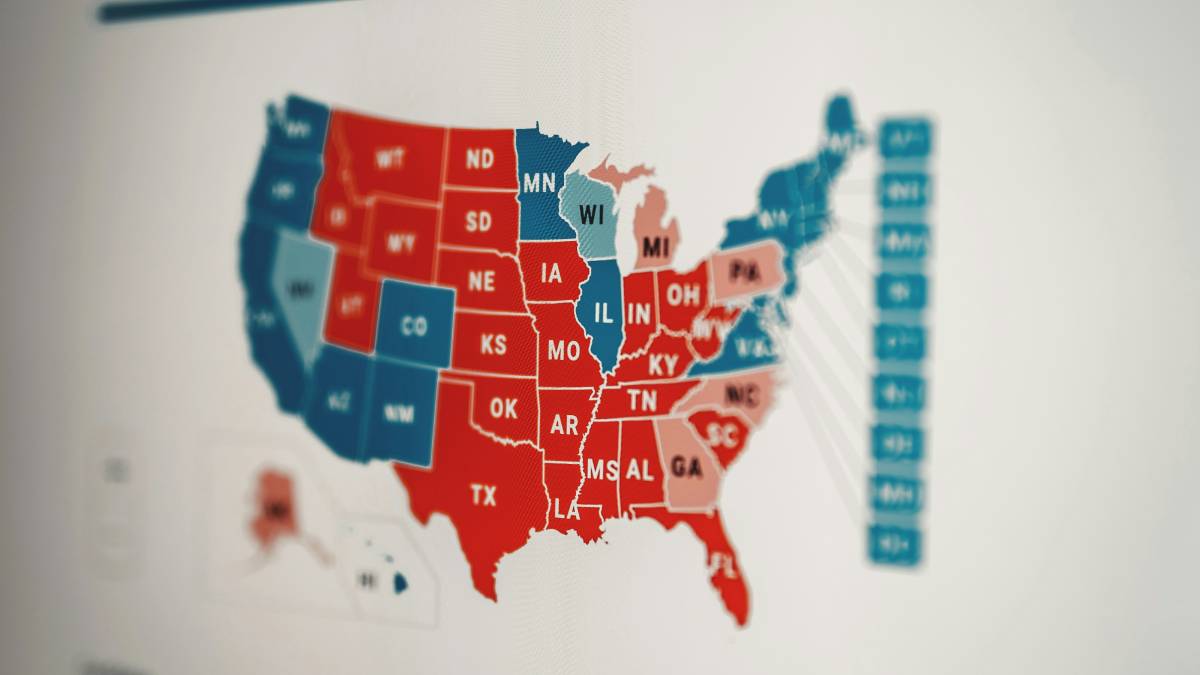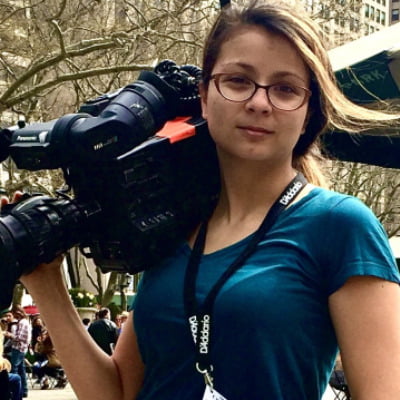BNM Writers
As 2024 Election Plans Come to Fruition, There’s Still Shimmer of Hope for Unbiased Journalism
We saw pandering journalism in 2020 and 2016. It does not work. The good news is some outlets are recognizing this and are doing better journalism in the process.
Published
2 weeks agoon

A New York Times editor is saying “It’s not the media’s job to prevent President Trump from winning.” A panel of media outlets (ABC, AP, CBS, CNN) claim they are carefully planning “voter-centric election coverage.” Plus, a Former President and Presidential Candidate is on trial in New York. Yes, these are all signs of another election year where the media’s self-awareness is lacking.
Media outlets that are unable to step out of their own echo chamber and actually create neutral news are not just rare — they typically go unnoticed. This is because those who make the most noise, AKA immoderate and extremist outlets, get the most attention on both social media and national airwaves. While CNN claims they are planning “voter-centric election coverage,” I doubt it’s for all voters.
Too-bin or not Too-bin, that was the question for CNN. This election cycle is seeing the comeback of Jeffrey Toobin after being ejected from CNN for masturbating while on a Zoom call. I not only question the ethics of whoever made the decision to bring him back, I don’t understand why. Not only does it create an uncomfortable work environment, it shows CNN is not appealing to all voters, just a select group of those on the left.
It also begs to question does CNN find public masturbation acceptable behavior for their employees? During his absence, there have been several legal analysts who have joined CNN hosts and proven their worth, yet the outlet is going with Toobin. This is not a voter-centric decision. It’s an ego-centric one.
Another sign of concern layoffs happening at Allen Media. It’s never a good sign for our industry when layoffs happen, but in an election year, it’s even worse for the people who we serve. Newsroom resources are crucial to fact-checking, additional reporting, and making better news. While their spokesman said this is a “strategic change(s) to better position the company for growth,” you can not grow if you do not have enough resources to make a good product.
Lastly, for those who care about awards (I’m rather indifferent about awards myself) the Pulitzer Prize winners were announced. However, it was not noted if the winners used Artificial Intelligence in the creation of their story. Award transparency is critical.
Since applicants are required to say if they used AI in their story, we should be told if the award is going to an AI user. Several lawsuits have been filed by outlets from around the country claiming programs like ChatGPT have infringed on their copyright and stolen their work. If the winner has used these programs we deserve to know because our colleagues’ work has been stolen.
It’s not all bad news bears. Good things are happening all over the place, like at Politico. The outlet, which AllSides Media views as left-leaning, published an article claiming Democrat donors, with names like Soros, Rockefeller, and Pritzker, are backing the Gaza Protests. What was once a conservative conspiracy was just launched into the mainstream media.
While conservatives on X, obliterated the outlet — because duh, they’ve reported on this for years — but should actually be thanking Politico. The outlet proved they are the global authority on the intersection of politics, policy, and power. More importantly, they are out of their echo chamber and giving new life to a story once balked at as a conspiracy.
More good news for the media, Barrett Media is expanding! I personally can attest to how nice it is to work here and love our mission of neutral reporting on the media industry. At a time when a lot of outlets are laying off workers or closing their doors, it’s important places like Barrett Media stay open to keep the media honest during this election cycle.
Americans have 180 days till Election Day 2024, Tuesday, November 5th, and even less time for those who plan on voting early, which varies by state. Trust in the media is at an all-time low yet media consumption is constant, thanks to our devices. The decisions “suits” make this year are crucial not just to our American freedoms but to their outlets’ credibility.
I wouldn’t hang my hat on Toobin helping CNN’s limp ratings. Nor do I think “voter-centric election coverage” means we are going to be journalists. What this statement actually says is “We are appealing to our base.” We saw pandering journalism in 2020 and 2016. It does not work. The good news is some outlets are recognizing this and are doing better journalism in the process.

Krystina Alarcon Carroll is a columnist and features writer for Barrett News Media.She currently freelances at WPIX in New York, and has previously worked on live, streamed, and syndicated TV programs. Her prior employers have included NY1, Fox News Digital, Law & Crime Network, and Newsmax. You can find Krystina on X (formerly twitter) @KrystinaAlaCarr.
You may like
BNM Writers
How Lee Harris Went From Polka Station Owner to Radio Hall of Fame Nominee
“Should it come to pass that I get inducted, it will be on behalf of the hundreds and hundreds who have toiled largely — I don’t want to say unrecognized, but uncelebrated — in all news radio.”
Published
35 mins agoon
May 20, 2024
For 30 years, if you gave him 22 minutes, he gave you the world. Those of you who live in the tri-state area have probably heard Lee Harris’ voice on 1010 WINS. If you haven’t, chances are his innovative technology is helping your radio news reporters “do it live.” These are just some of the reasons Harris was nominated to the Radio Hall of Fame this year.
“I got interested in radio because, one day, I broke my glasses and you couldn’t get them in an hour back then. I couldn’t really watch TV. So I put on the radio and I was just fascinated by what I was hearing and kind of took it up from there,” Harris told BNM over a Zoom call.
As a pre-teen, Harris had the added bonus of friends developing an interest in the medium as well. “So we did the pirate radio station thing. Then when I was 14, I took the test so I could get the third class license with broadcast endorsement.” The license was needed at the time to work at a radio station to turn the transmitter on and off.
While in high school, the native Long Islander began working at the Hofstra University station, “because they didn’t have enough kids who could pass the test. So they reluctantly let me and my friend Phil come in to be board operators.” Soon after, Harris grabbed the mic at WRHU and hosted their classical radio show.
During his senior year of high school, Harris had jobs at two commercial stations on Long Island. “One before school and one after school And not too much school in the middle but enough to graduate,” he joked.
Harris moved on to the University of Wisconsin and worked at a few local stations before a Program Director hired him in Chicago at WFYR for five years. “I picked up a few tricks of the trade. Chicago was really cold and so when they decided maybe a 12-person news department at an FM station wasn’t that great an idea, I went to Phoenix.”
KTAR was home to Charlie Van Dike’s morning show, where Harris was known as “The Squeaker.” From there he became the Managing Editor at KMOX in St. Louis before heading to WGN in Chicago. “Then, I — with a partner — bought a radio station in Wisconsin which had an all-polka format. And it was reasonably successful for a number of years.”
It was the late 1980s when Madonna, Michael Jackson, and Prince were headlining the airwaves, yet Harris’ polka format in Madison was grabbing ears. “The people really appreciated the programming. Older people, for the most part.” Ad revenue was scarce except from one trustworthy group. “Our biggest account on the station were some people who paid us to play the rosary every night at 20 minutes to seven. They paid us like $80,000 a year cash in advance. I was thinking like L. Ron Hubbard: The real money is in religion.”
Harris, a visionary armed with an idea, couldn’t change the format overnight by himself. “I went to my partner and I said ‘Look, we’re beating our heads against the wall here for nothing.’ Madison, Wisconsin did not have a paid religion station. And I said, ‘This is what we ought to do.’ And he didn’t want to do that, so I had him buy me out.” Today, the station Harris once owned is a 24/7 Catholic station.
Soon after, Harris came home to get out of radio and into business with his brother. “That lasted about three weeks,” he admitted.
While driving Harris heard what would become his radio home, 1010 WINS. “Listening to the people on the on the air, I said, ‘I bet I could get here. I could get a job on weekends here and I’ll do that until I get my next management job.’ So I faked up a tape because I hadn’t been on the air in about ten years. Dropped it off. And next thing I knew, I was on morning drive for the next 30 years.”
In keeping with the typical morning show lightness, Harris often brought levity to his listeners amid the typical New York murder and mayhem. “One thing I knew from having been out of news for about ten years before I went back to work at WINS, is that people tended to make fun of the news a lot. So what I did is when there was an obvious joke in a story, I made sure to include it so that the audience knew that we knew that it was funny. And some of these things became tentpoles in the tradition of morning radio.”
After his morning show, Harris would head to his 9-to-5 job as founder of Control Room Pro. Their software includes Anchor Dashboard, QGoLive, and Motion Mixes. Most notably QGoLive eliminated the clunkiness of wires, microphones, and transmitters. His innovative software gives reporters air-quality sound and playback ability just by tapping an app on their phone.
Over the years the radio veteran covered a vast range of stories but when the unthinkable happened, it was Harris’ voice which New Yorkers turned to on September 11, 2001.
“It started out as the most boring, ordinary day. [There was] a primary election where the outcome was known and it rapidly turned into something else,” Harris recalled. “I thought my job that day was to be calm and sound calm and convey the information. I think I did. People who have come back to me over the years say ‘I was listening. You sounded calm and that helped.’”
On his potential induction to the Radio Hall of Fame, Lee Harris was quite humble noting, “Should it come to pass that I get inducted [into the Hall of Fame] it will be on behalf of the hundreds and hundreds who have toiled largely, I don’t want to say unrecognized, but uncelebrated in, all news radio.”

Krystina Alarcon Carroll is a columnist and features writer for Barrett News Media.She currently freelances at WPIX in New York, and has previously worked on live, streamed, and syndicated TV programs. Her prior employers have included NY1, Fox News Digital, Law & Crime Network, and Newsmax. You can find Krystina on X (formerly twitter) @KrystinaAlaCarr.
BNM Writers
The NFL Continues to Test Fans
There’s no doubt that the NFL’s marketing machine is mighty.
Published
36 mins agoon
May 20, 2024By
Andy Bloom
The NFL is the most powerful marketing machine in the world. When it comes to fan engagement and finding new financial opportunities, nobody is better than the NFL.
Statista reports an estimated 29.2 million Americans participated in fantasy football in 2022. Considering that 50.4 million people in the U.S. participate in all fantasy sports, that’s a fantastic percentage engaged in fantasy football.
The Super Bowl is the most-watched television program annually. Last February’s Super Bowl LVIII became the most-watched telecast of all time, with an estimated 123.7 million viewers tuning in to see the Kansas City Chiefs defeat the San Francisco 49ers.
Not content with an 18-week season and a month-long playoff schedule, the NFL marketing machine has turned other off-season events into major celebrations.
The NFL Draft in Detroit this year drew 100,000 fans. The 2023 Draft drew an estimated 54 million unique viewers on television and online.
Now, the NFL has turned the schedule release into another high-engagement event with fans. Teams did their best to outdo one another with social media posts announcing their schedules.
Amid the NBA and NHL playoffs and getting into the heart of the MLB season, the NFL steals sports fans’ attention with something as mundane as the schedule release. It’s particularly impressive, considering we already knew what teams would be playing each other.
Sports radio was captivated all week, predicting wins and losses for hometown teams. Lost in the jubilation and worry that came with the schedule release was the announcement that another streaming service would broadcast two games this year.
In January, I wrote a column critical of the NFL and NBC for making the Miami Dolphins at the Kansas City Chiefs Wild Card Playoff game available exclusively streaming on NBC’s Peacock.
The number of negative responses to that column was surprising. People commented that Thursday Night Football was already streaming on Amazon Prime, which requires a subscription, and Monday Night Football on ESPN, which requires cable. Some noted other games are only available on the NFL Network, which isn’t part of most basic cable plans. Others thought the six bucks to watch the game wasn’t a big deal.
At the time, I warned that the NFL would continue to move more games to more streaming platforms, and perhaps pay-per-view, unless fans were outraged. The NFL will make more games available exclusively on additional subscription-based streaming platforms in the coming season.
Along with the schedule release, the NFL announced two games on Christmas Day, a Wednesday. Wednesday football with the Kansas City Chiefs at the Pittsburgh Steelers (1:00 ET) and the Baltimore Ravens at the Houston Texans (4:30 ET). The Christmas Day games will be streamed exclusively on Netflix.
Netflix, which has historically avoided live sports, announced a three-year deal with the NFL. Analysts estimate the cost for each game to be $150 million. The NFL is impressive. The league keeps finding ways to milk additional revenue, even if it means playing games on a Wednesday.
To watch all the NFL games in the 2024-25 season, fans will need access to the four major networks: ABC, CBS, Fox, and NBC, cable for ESPN and the NFL Network, and subscriptions to Amazon Prime for Thursday Night Football, a Black Friday game, and a Wild Card playoff game; Peacock which will have exclusive rights to the Eagles and Packers week one from Brazil; and Netflix for the two Christmas Day games.
Fastcompany.com analyzed the costs and concluded: “As monthly subscription fees for cable and streaming platforms keep climbing, and with the NFL considering auctioning off certain games in future seasons, it’s conceivable that the price tag for watching NFL games on TV could soar to $1,000 plus.”
The NFL is continuing to add games to additional streaming services as subscription fatigue increases. A Wall Street Journal article from earlier this year reports, “About one-quarter of U.S. subscribers to major streaming services—a group that includes Apple TV+, Discovery+, Disney+, Hulu, Max, Netflix, Paramount+, Peacock and Starz—have canceled at least three of them over the past two years.”
There’s no doubt that the NFL’s marketing machine is mighty. As it spreads itself across more subscription-based services, is there a point where even the NFL will find fewer people watching games? The NFL thinks not.

Andy Bloom is president of Andy Bloom Communications. He specializes in media training and political communications. He has programmed legendary stations including WIP, WPHT and WYSP/Philadelphia, KLSX, Los Angeles and WCCO Minneapolis. He was Vice President Programming for Emmis International, Greater Media Inc. and Coleman Research. Andy also served as communications director for Rep. Michael R. Turner, R-Ohio. He can be reached by email at [email protected] or you can follow him on Twitter @AndyBloomCom.
BNM Writers
How Can Commercial Radio Support College Radio?
A station needs marketing which is a golden opportunity to use social media, it needs sales much like any noncommercial operation, and it needs promotion.
Published
37 mins agoon
May 20, 2024By
Ed Cohen
The demonstrations, encampments, disruptions, and more that have taken place on college campuses over the past couple of months have garnered major headlines. Whatever your take on the war in Gaza, there hasn’t been much positive news with perhaps one exception: college radio.
The kudos have been handed out to WKCR, Columbia University’s student radio station. While I’ve not personally listened, the ability of the station to cover the events on their campus has been lauded. When radio people wonder about where the next generation of talent will come from, college radio operations give us some hope.
My own background includes a full decade of college radio, both at Michigan State in the AM carrier current days before MSU finally was given the license for WDBM-FM (the former owner of then-analog channel 6 in Lansing fought the application for years on interference grounds) and also at WUSC-FM at the University of South Carolina. I was a program director twice and a general manager once as a student.
While I didn’t like everything we put on the air, college radio was a wonderful experience and I’m still in touch with some of the people I worked with decades ago.
There are still plenty of vibrant college stations out there. Both of my alma maters have great student-run stations that cater to all kinds of tastes and bring in plenty of students as talent and administrative staff. To some extent, the mix of volunteers has changed. When I was an undergrad, the mix was about 50/50 between those who wanted a career in radio and needed experience versus those who loved the music and, in some cases, wished to impose their superior taste on the listeners. Today, I suspect that the percentage who are there for experience as a stepping stone to our industry is far lower.
Over the past decade or so, some colleges and universities have sold their FM licenses to either public radio operations or non-commercial religious broadcasters. In some cases, the schools did well financially. In 2010, Rice University in Houston sold KTRU for nearly $10 million to the University of Houston, allowing UH to have a second public radio station. KTRU eventually returned to the air as an LP in 2015. Vanderbilt University collected over $3 million from the sale of WRVU to Nashville Public Radio in 2011.
WRAS at Georgia State University in Atlanta was partially sold off. Georgia Public Broadcasting took over the station and began airing public radio programming from 5 AM until 7 PM while the students kept 7 PM until 5 AM. While public radio programming is on the air, the student-run Album 88 format is broadcast on the station’s HD2 signal. WRAS has a great signal and I was amazed when I visited in 1977 compared to the 10-watt WUSC-FM (we occasionally referred to it as 10,000 milliwatts on-air).
There are other instances of college FMs being sold, mostly from smaller schools (Bucknell, University of Evansville, Trine University, Castleton University). While the amounts generated by the sales have been far smaller than what Rice received, these schools decided that it wasn’t worth keeping the on-air frequency alive and an online version would be a suitable replacement.
To put it mildly, selling off student radio stations is short-sighted. The industry needs more talent and college radio is a great place to learn, make mistakes, and either fall in love with radio and audio or just meet new people. College radio also helps build a sense of responsibility. It’s your show, you need to be there on time, be prepared, and be responsible for what goes out over the air. Even the mild restraint of what can be said or played on an FCC-licensed frequency versus the free reign of the internet is a great lesson for students.
College radio also gives students a chance to operate an organization as a business. A station needs marketing which is a golden opportunity to use social media, it needs sales much like any noncommercial operation, and it needs promotion. Since most college operations run on shoestring budgets, that should prepare anyone who goes on to work in commercial radio. The students probably know more about social media than most of us and this is a great opportunity to put the knowledge to work which can translate into professional skills.
Further, while I doubt any school would want to shut down the student newspaper, writing for “print” is not the same as writing and gathering news for audio or video. Without a radio station, there is no opportunity for the repetition needed to become good at producing information content for the electronic media. And with a college station, you have a way to promote off-air content as well which can be on the station’s internet presence.
Here in Bowling Green, I give a number of quarter hours to WWHR, Revolution 91.7 at Western Kentucky University. Unfortunately, the station has been almost entirely automated since I moved here which is sad considering there is a broadcast communications curriculum at WKU. The station has a good signal, sounds fine technically, and has a solid history. My fear is that WKU may be looking for a payday by selling the frequency. No, I don’t have any evidence, but if it happened, it would be a sad day.
Let’s support college radio and let’s meet again next week.

One of the radio industry’s most respected researchers, Dr. Ed Cohen writes a weekly column for Barrett News Media. His career experiences include serving as VP of Ratings and Research at Cumulus Media, occupying the role of VP of Measurement Innovation at Nielsen Audio, and its predecessor Arbitron. While with Arbitron, Cohen spent five years as the company’s President of Research Policy and Communication, and eight years as VP of Domestic Radio Research. He has also held the title of Vice President of Research for iHeartMedia/Clear Channel, and held research positions for the National Association of Broadcasters and Birch/Scarborough Research. Dr. Ed always enjoys hearing your thoughts so please feel free to reach him at [email protected].















